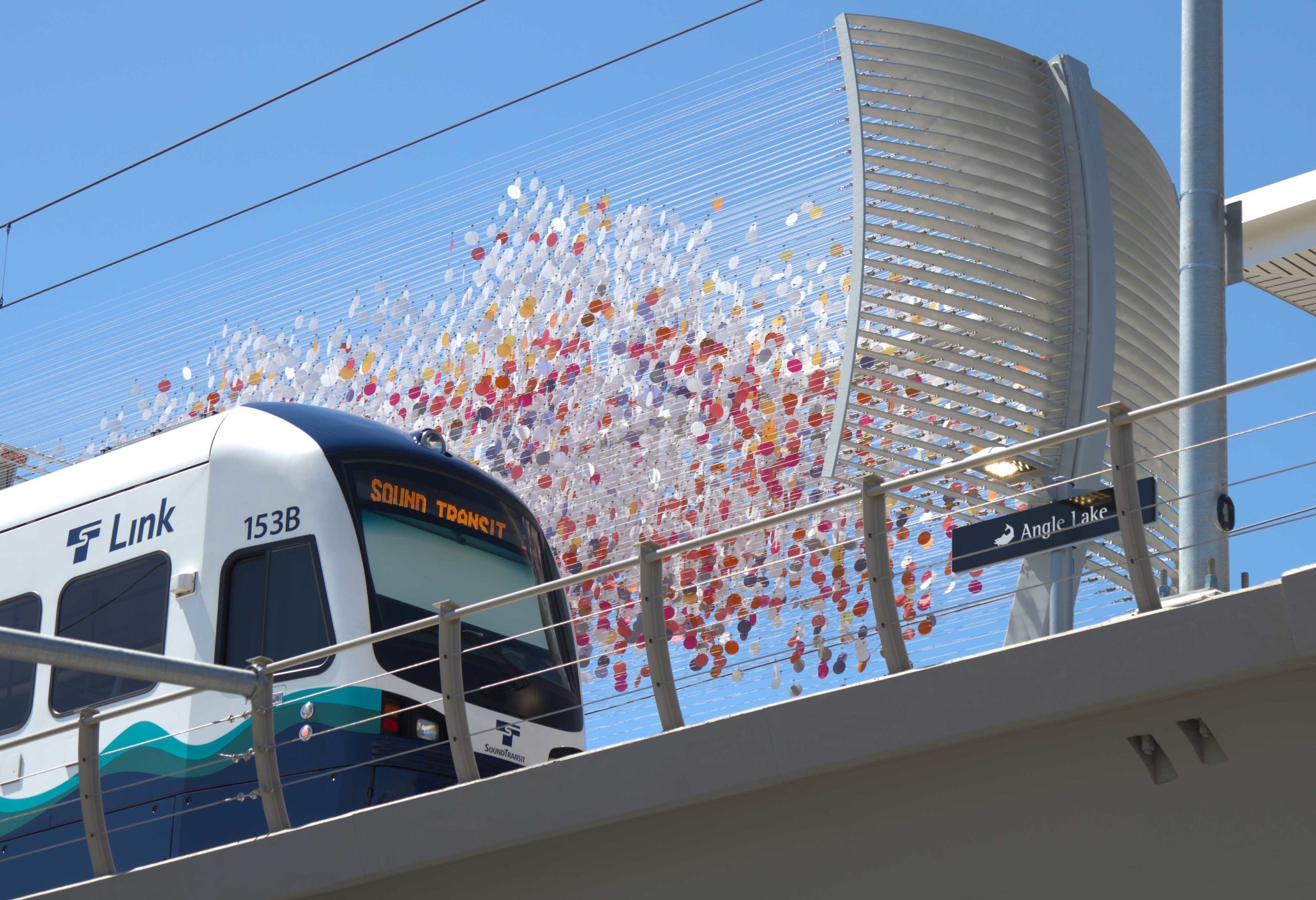First Sound Transit facility earns Gold rating in Leadership Energy and Environmental Design


Laura Haddad’s “Cloud” sculpture in background
Photo courtesy Darrius Wells and Sound Transit
Sound Transit’s newest light rail facility has earned Leadership Energy and Environmental Design (LEED) Gold certification from the U.S. Green Building Council for its use of sustainable practices in the design and construction of the Angle Lake Station, which opened in the City of SeaTac last fall. LEED Certification provides independent verification of a building’s sustainable design and is the most widely used sustainability rating system in the world.
“This is another sign that Sound Transit is fulfilling its basic responsibilities: not only moving people more efficiently with light rail but also doing it sustainably,” said Dave Somers, Sound Transit Board Chair and Snohomish County Executive. “We hope to keep earning gold as stations are built in Lynnwood, Bellevue, Fife, Redmond, Everett, Issaquah, and across the Puget Sound region.”
“The Angle Lake Station exemplifies the creative ways in which transit facilities can function as sustainable resources in their communities,” said Sound Transit Chief Executive Officer Peter Rogoff. “Achieving LEED Gold status for our newest Link station is a testament to Sound Transit’s commitment to use taxpayer dollars to design and build facilities that contribute to the health of our environment here in the Puget Sound region.”
Using the “Environment in Motion” theme, contractors who designed and built the transit facility incorporated several environmentally sustainable features in the station. A 60-panel, 14-kilowatt solar array on the platform canopy provides up to 18,000 kilowatt hours of power per year to the station. When not in use, escalators from the platform to a plaza area slow to a reduced speed to conserve energy. A pedestrian walkway covered by a 50-kilowatt solar array that also provides weather protection leads to a garage enfolded in a blue, wave-like façade of anodized aluminum that requires little maintenance. Four charging stations for electric vehicles are housed in the garage, and storage for 52 bicycles is available on site.
Station construction also incorporated regionally produced and recycled materials. Particular attention was paid to selecting materials that do not contain toxic chemicals, such as rock wool and cellular glass insulations. The station predominately uses LED lighting to reduce energy use.
Public art also reflects an environment in motion. Artist Laura Haddad’s “Cloud” sculpture, made of 6,000 eco-resin disks that glimmer with variations in sunlight and wind, hangs above the train platform as a prominent visual element of the station. The artwork illuminates in changing colors at night. Above the grand open staircase leading from the plaza to the garage, artist Jill Anholt’s “Immerse” sculpture appears to hang weightlessly in three delicate arcs that transfer and filter light into a parking area below. Unobstructed views of Puget Sound and the mountains from the station platform offer some of the best views along the Link light rail line. The elevated station, which includes a guideway, garage and pedestrian plaza, was the first design-build project completed by Sound Transit.
– Sound Transit








